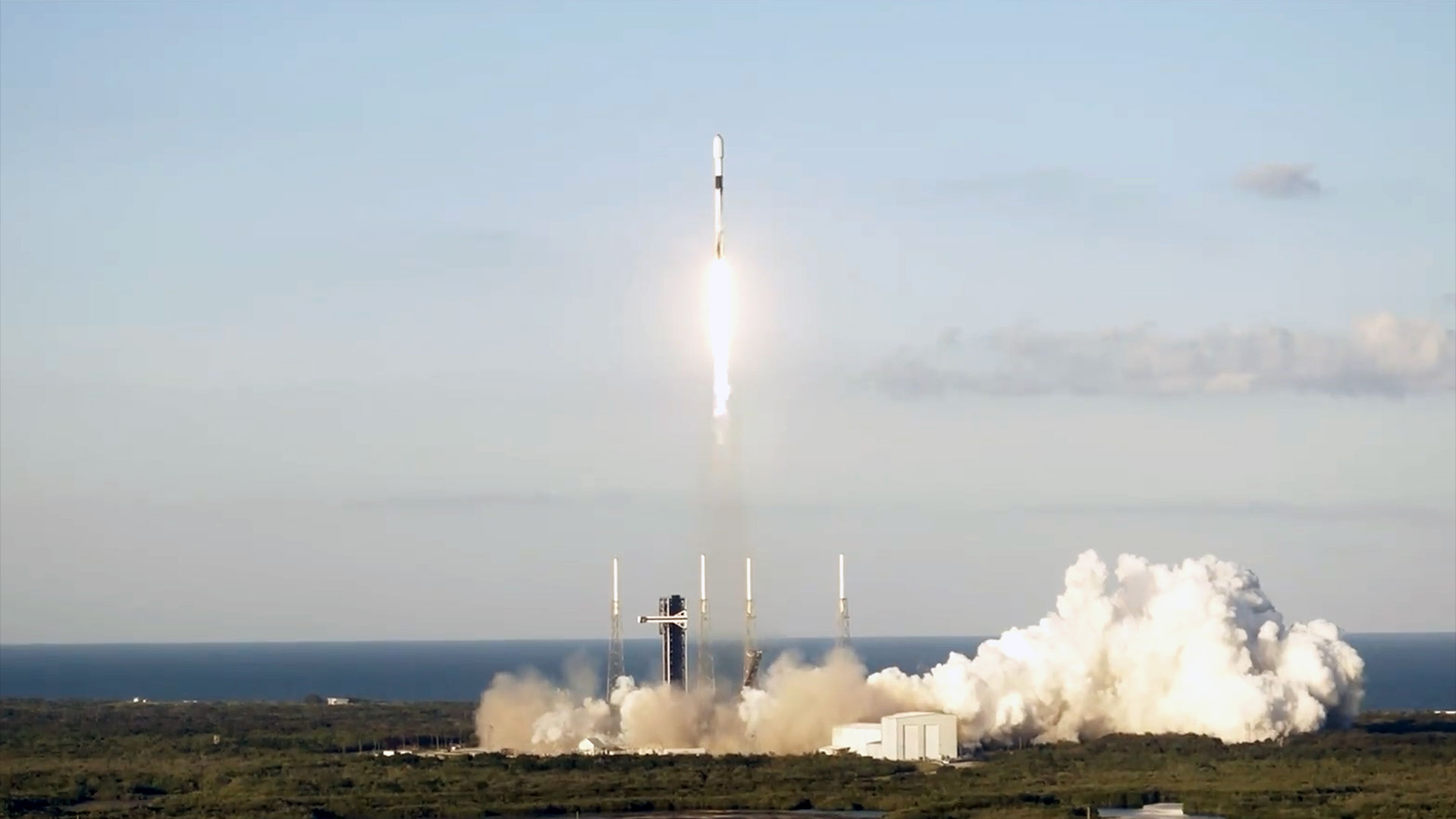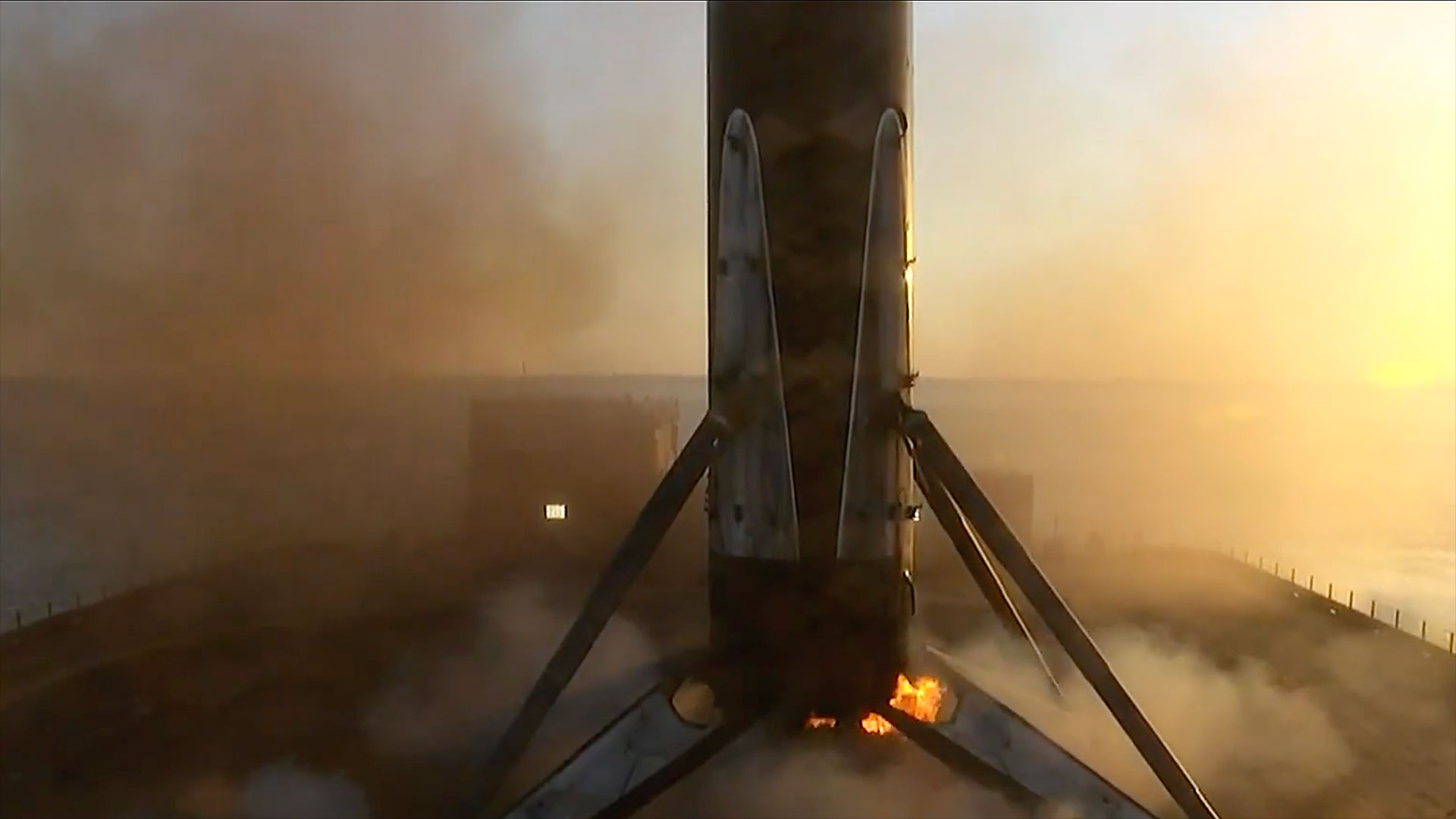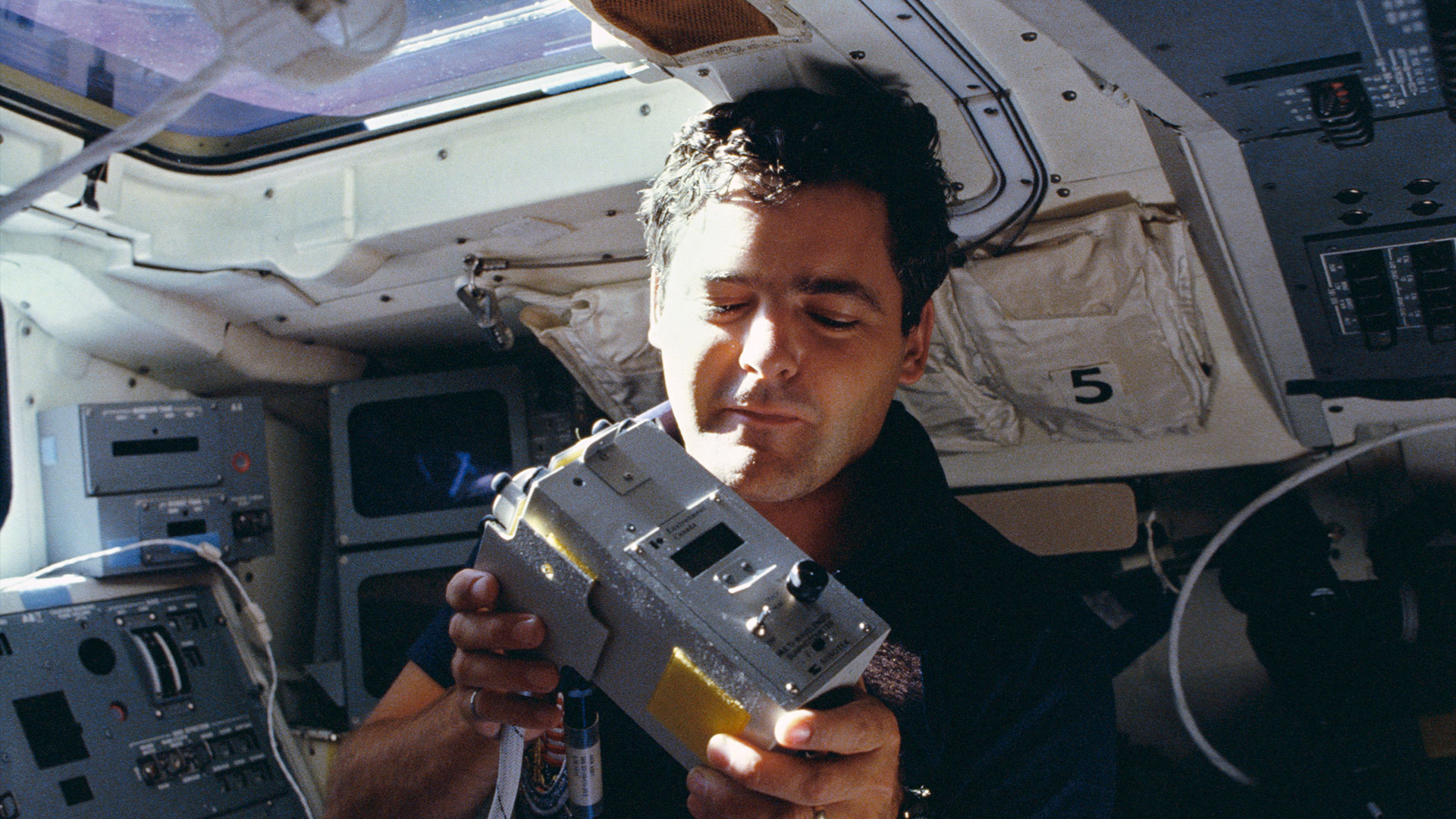SpaceX launched another batch of its Starlink internet satellites from Florida's Space Coast on Saturday evening (Oct. 26).
A Falcon 9 rocket carrying 22 Starlink spacecraft lifted off from Cape Canaveral Space Force Station at 5:47 p.m. EDT (2147 GMT).

As to plan, the Falcon 9's first stage came back to Earth about eight minutes after liftoff. It touched down on the drone ship "Just Read the Instructions," which was stationed in the Atlantic Ocean.
It was the 19th launch and landing for this particular booster, and its 15th Starlink mission overall, according to a SpaceX mission description.
The Falcon 9's upper stage, meanwhile, continued to haul the Starlink satellites to low Earth orbit (LEO), where there were to be deployed about 64 minutes after liftoff.
Related: Starlink satellite train: How to see and track it in the night sky

Starlink launches are coming fast and furious these days: SpaceX has launched 100 Falcon 9 missions so far in 2024, and 66 of them have been Starlink missions.
Get the Space.com Newsletter
Breaking space news, the latest updates on rocket launches, skywatching events and more!
The Starlink megaconstellation, which beams internet service to customers around the world, currently consists of more than 6,400 active satellites, according to astrophysicist and satellite tracker Jonathan McDowell.
Join our Space Forums to keep talking space on the latest missions, night sky and more! And if you have a news tip, correction or comment, let us know at: community@space.com.

Michael Wall is a Senior Space Writer with Space.com and joined the team in 2010. He primarily covers exoplanets, spaceflight and military space, but has been known to dabble in the space art beat. His book about the search for alien life, "Out There," was published on Nov. 13, 2018. Before becoming a science writer, Michael worked as a herpetologist and wildlife biologist. He has a Ph.D. in evolutionary biology from the University of Sydney, Australia, a bachelor's degree from the University of Arizona, and a graduate certificate in science writing from the University of California, Santa Cruz. To find out what his latest project is, you can follow Michael on Twitter.
